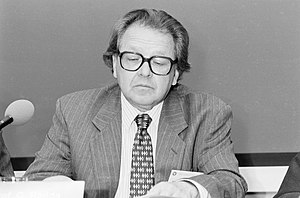George Radda
Hungarian-British chemist
Died when: 88 years 96 days (1059 months)Star Sign: Gemini

Sir George Charles Radda CBE FRS (Hungarian: György Károly Radda; born 9 June 1936) was a Hungarian - British chemist.
In 1957, he attended Merton College, Oxford, to study chemistry, having set aside an earlier interest in literary criticism.His early work was concerned with the development and use of fluorescent probes for the study of structure and function of membranes and enzymes.
He became interested in using spectroscopic methods including nuclear magnetic resonance (NMR) to study complex biological material.In 1974, his research paper was the first to introduce the use of NMR to study tissue metabolites.
In 1981, he and his colleagues published the first scientific report on the clinical application of his work.This resulted in the installation of a magnet large enough to accommodate the whole human body for NMR investigations in 1983 at the John Radcliffe Hospital in Oxford.
In 1982, Radda published about the relationship between deoxygenated haemoglobin and the NMR signal.From 1996, until his retirement in 2004, Sir George was Chief Executive of the Medical Research Council in the UK.
Currently, Sir George is the new head of the merged departments of Physiology and Human Anatomy and Genetics at the University of Oxford and Chairman of the Singapore Bioimaging Consortium, a research institute of ASTAR in Singapore.
.jpg?width=300)

